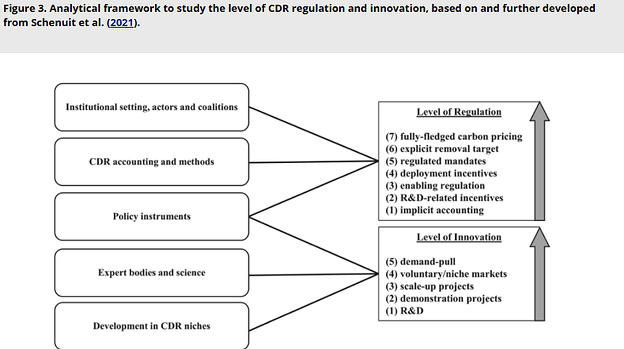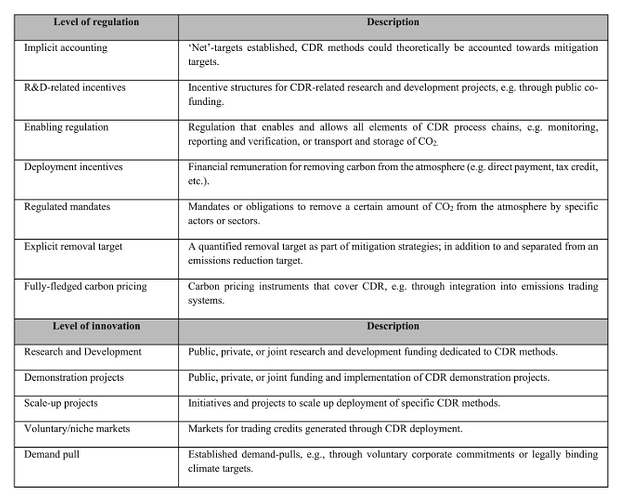In an article published in Climate Policy, ‘Taking Stock of Carbon Dioxide Removal Policy in Emerging Economies: Developments in Brazil, China and India’, Felix Schenuit, Elina Brutschin, Oliver Geden, Fei Guo, Aniruddh Mohan, Ana Carolina Oliveira Fiorini, Sonakshi Saluja, Roberto Schaeffer and Keywan Riahi have studied the incorporation of CDR in a group of IPCC scenarios together with the issues pertaining to CDR governance and policy in Brazil, China and India. In doing so, they have showcased the anticipated utilization of CDR methods in the latter countries as well as the extent to which ‘the level of CDR regulation and innovation’ differs across them.
Key takeaways:
- In line with the landscape that has emerged in OECD countries, there is a significant absence of frameworks that can facilitate the gradual growth of the CDR methods that are employed. This situation poses political obstacles against the realization of the IPCC scenarios that focus on various mitigation routes.
- The formulation of CDR policies should be guided by the frameworks that are already in place. In this respect, the policies shaping the Land Use, Land-Use Change and Forestry (LULUCF) can be utilized with the objective of bolstering CDR regulation and innovation.
- The LULUCF policies in the CDR sector can be utilized in addition to other three policy goals, namely ‘incremental modification, early integration and fungibility and proactive CDR policy entrepreneurship.’
- In addition, the utilization of LULUCF policies in the CDR sector provides a field of inquiry for future CDR studies that may investigate how existing policies can be reshaped to govern CCS-based CDR methods.
- Asia and Latin America are regions that make significant contributions to CDR efforts by operating in the LULUCF sector and engaging in CCS.
- China, Brazil and India have not enacted policies and regulations with respect to CDR methods that can be employed via Carbon Capture and Storage. On the other hand, they have enacted instruments governing CDR in the LULUCF sector.
- LULUCF-based CDR benefits from a higher level of innovation compared to CCS-based CDR.
- It is unlikely that the scale of CCS-based CDR will grow considerably in China, Brazil and India.
- That said, the scale of the CDR activities can grow at a more accelerated rate in China compared to other countries.
- Studies that reveal the similarities of and differences between existing CDR policies and governance schemes can offer lessons learned for their novel counterparts that are implemented at the national and international levels. In addition, they can provide external input for narratives regarding CDR deployment that can later be used in integrated assessment modelling.
- There is a need for more interdisciplinary research that can comparatively study a higher number of new CDR governance schemes and policies, bolstering the efforts underway to provide additional input for mitigation pathways whose achievement are not constrained by political barriers.
Read the full paper here: https://www.tandfonline.com/doi/full/10.1080/14693062.2024.2353148?src=recsys#d1e768

